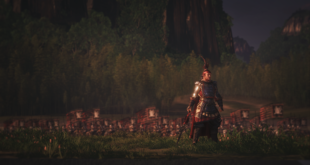I recently watched a very nasty movie called ‘The Human Centipede’. It’s about an insane doctor with a plan to stitch three humans together, mouth to bum. The centrepiece of the movie is a scene in which the Doctor explains the procedure to his patients.
It involves kneecapping them, pulling their teeth out, and of course, a bit of jiggery pokery around their rear end and facial areas, and connecting their gastronomic tracts, in order to achieve the desired effect. It’s face scrunchingly vile description, and a very effective scene.
When it comes to the money shot though, most of the gore is hidden behind bandages and plasters. From the description given in that pivotal scene, you’re able to fill in the blanks in your mind, which so the impact of the later scenes is amplified, despite the fact that you’re not seeing much of a money shot.
It’s a technique that’s been used in cinema for some time, and isn’t limited to grindhouse horror movies. Either for budgetary reasons, censorship laws, or technical limitations, directors have often been forced to come up with creative ways to give the impression of something happening, rather than trying to capture it frame-for-frame.
Other famous examples that spring to mind are Psycho’s ‘Shower Scene’, and the unfilmed trip to the funeral in ‘Clerks’. They prove that it’s not always necessary to abandon big ideas because they are too hard or expensive to put into practice. There may be another way to realize them.
And you know what… it never results in a worse film.
If you think about it, the same thing has been happening in videogames since they began. It’s a medium that has been almost entirely shaped by being clever with the technical limitations of the time. Imagine being there on the frontier when they tried to create the impression of an alien invasion with one colour and 12 by 12 pixel sprites.
But just because technology has moved on, does that mean games HAVE to become more realistic in their depictions? Nintendo can now afford to have Mario bend over and pick up every coin he comes across, but instead they’ve stuck with the original ceremony. The coin vanishes in a puff of stars, accompanied by a satisfying ping. That’s not what tends to happen when you pick things up, but it does the job of providing the impression of picking them up, and makes for a better game.
Taking a very recent example, Frictional Games’ Amnesia is a game which actively encourages you not to engage monsters, or even look at them. I asked lead programmer Thomas Grip if this decision was based in any way upon limitations of the budget, or limited technical resources.
“I would say that limited resources is one part of the answer. We cannot afford to have flashy effects and have to rely on more subtle things to bring the message forward. Where Resident Evil has a detailed transformation of man to monster, we use sound effects and show some blood stains instead.”
But the decision wasn’t wholly based upon the team’s limitations. Mostly, the team believed that it was simply the best way to achieve the atmosphere they desired.
“Most of what is in the game is a conscious choice, and we tried to keep hostile creatures as ‘unknown danger’ for as long as possible. Players can play for several hours and go through maps with enemies, without getting a good look at them. To enhance this type of thing was probably a bigger motivator than our lack of resources.
Our main design goal has been to bring the horror into the player’s mind and mostly it is not the game that scares the players, but they scare themselves instead. This is a bit of risky design, but given the response so far it seems to have worked out pretty well.”
Rather than considering how you’re going to muster the resources to make your ideas viable, spare a thought instead for how you can make your ideas viable using the available resources.
In the indie world, exploitation of basic ideas and quick but effective graphical styles have often been born from budgetary limitations.
It has forced developers to pushing one toyset or idea as far as possible, rather than create a hugely extensive one, and it’s led to some very creative results, N+ and Trials HD being notable examples.
I’m also inspired by everything that ‘Ice-Pick Lodge’ or ‘Tale of Tales’ have made. They manage to create unique, affecting and atmospheric games with very limited resources. They, and many others like them, serve to show that no matter how limited your finances, how small your team, or even how technically proficient they are, you can still create magic.
Limitation can inspire. Willy Russell wrote ‘Shirley Valentine’ in a single month, for no other reason than that’s all the time he had available.

 MCV/DEVELOP News, events, research and jobs from the games industry
MCV/DEVELOP News, events, research and jobs from the games industry



